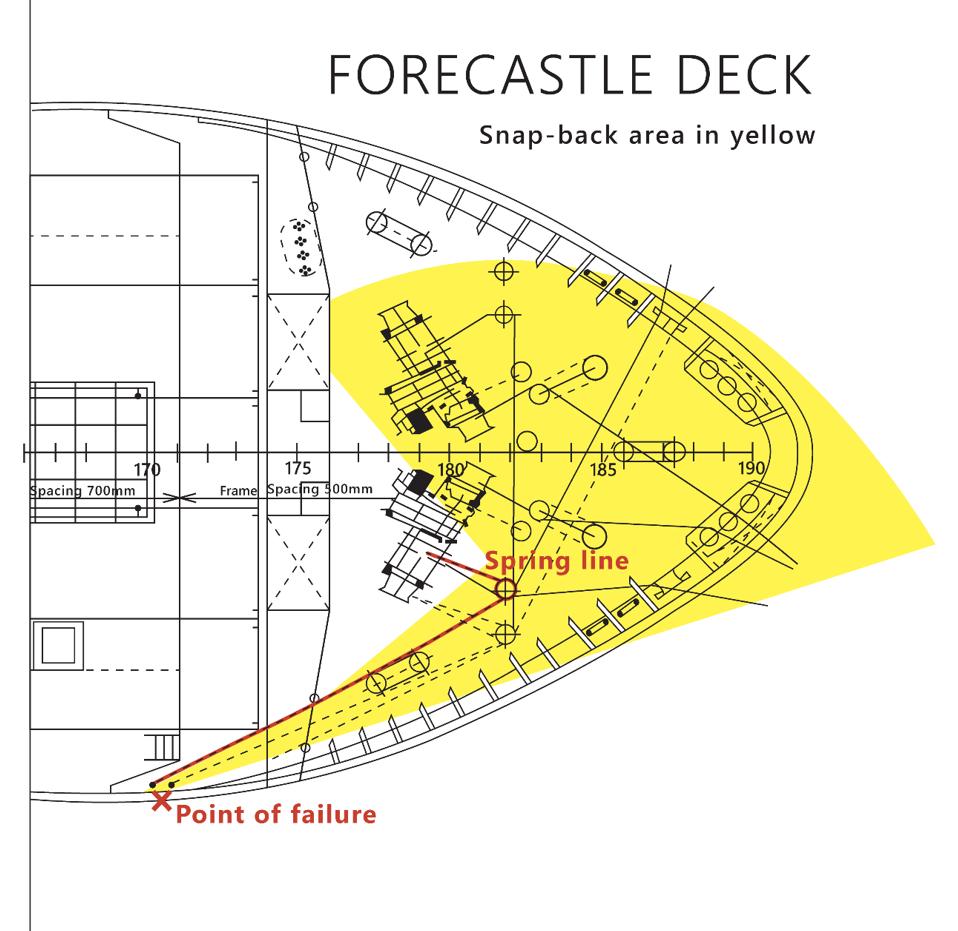October 25, 2022
Director of Marine Operations, CTMA
435 Chemin Avila-Arseneau
Cap-aux-Meules QC G4T 1J3
Regional Director, Programs – Atlantic, Transport Canada
6th floor
95 Foundry Street
Moncton, NB E1C 5H7
Subject :
Marine Transportation Safety Advisory Letter 03/22 (occurrence M22C0005)
Safety during docking and undocking operations
On 09 January 2022, a crew member on the Canadian-flagged roll-on/roll-off ferry Madeleine II was fatally injured when a spring line snapped back while the ferry was docking at Wharf 2 in the Cap-aux-Meules harbour in Quebec. The crew had attached the first spring line to a mooring bollard on the wharf and were in the process of attaching a second spring line when the bollard broke under the tension of the first spring line. The first spring line snapped back and struck the first officer, who was fatally injured. The Transportation Safety Board of Canada investigation into this occurrence (M22C0005) is ongoing.
Several occurrences involving injuries or death caused by mooring lines during docking and undocking operations have been reported in Canada and internationally. According to statistics from the TSB database, from January 2017 to March 2022, 13 occurrences (including the Madeleine II) were reported in Canada on Canadian- and foreign-flagged vessels. As a result of these occurrences, 12 people were seriously injured and 2 people were fatally injured.
The safety of mooring operations continues to require particular attention and its importance cannot be underestimated. These routine mooring operations are carried out at all times of day and night and in every season. One of the main risks present during mooring operations is the phenomena called snap-back. It is the sudden release of built-up energy of the mooring line under tension. A common practice to mitigate this risk is to paint snap-back zones on the deck at mooring stations.
Until recently, the UK Maritime & Coastguard Agency’s Code of Safe Working Practices for Merchant Seafarers (COSWP) recommended marking snap-back zones on deck. Markings around critical points such as the warping drum, roller chocks, and pedestal roller fairleads were intended to warn seafarers to avoid standing in these areas when mooring lines are under tension. However, recent studies have shown that calculating the snap-back zone accurately is more complex than initially believed. This is due to factors like berth configuration and the type and material of mooring line used (its elasticity and tensile strength). Therefore, hazard zone markings, although practical and simple, may not reflect the actual hazard zone and can give seafarers a false sense of security when they are standing outside the marked area.
The latest version of the COSWPFootnote 1 (2015 edition, Amendment 6, October 2021) now discourages the marking of snap-back zones on deck. The COSWP recommends that the entire mooring deck be considered a snap-back zone and that clear and visible signage be posted to alert the crew. It is also recommended that a bird’s-eye view illustration of the berth be produced to identify potentially hazardous areas (Appendix A).
The foregoing is provided for whatever follow-up action is deemed appropriate. The TSB would like to be informed of any action taken on this matter. Upon completion of the investigation (M22C0005) the Board will release its report into the occurrence.
Yours sincerely,
Original signed by
Clifford Harvey
Director, Investigations - Marine
Transportation Safety Board of Canada
CC.
- Director General, Marine Safety and Security, Transport Canada
